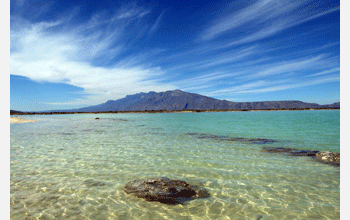Multimedia Gallery
Cyanobacteria in Pools (Image 2)
Cyanobacteria in Pools (Image 2)
The spring-fed pools, or "pozas," in Mexico's remote Cuatro Ciénegas valley are home to at least 70 bacterial species found nowhere else on Earth.
Janet Siefert, a Rice University computational biologist and colleagues wanted to examine ecosystems similar to those that existed on Earth more than 3 billion years. At Cuatro Ciénegas, they studyied cyanobacteria living in a network of more than 200 spring-fed pools, or "pozas," where they made the surprising discovery that viruses that infect bacteria are sometimes parochial and unrelated to their counterparts in other regions of the globe.
Support for the study was provided by the National Science Foundation, the Area de Proteccion de Flora y Fauna of Cuatro Ciénegas and the University of South Florida's Internal New Research Awards Program. To learn more about this research, the results of which were published in the journal Nature, see the EurekAlert story, "Biologists Surprised to Find Parochial Bacterial Viruses." (Date of Image: 2004) [See Image 1.]
Credit: Tommy LaVergne/Rice University
Images and other media in the National Science Foundation Multimedia Gallery are available for use in print and electronic material by NSF employees, members of the media, university staff, teachers and the general public. All media in the gallery are intended for personal, educational and nonprofit/non-commercial use only.
Images credited to the National Science Foundation, a federal agency, are in the public domain. The images were created by employees of the United States Government as part of their official duties or prepared by contractors as "works for hire" for NSF. You may freely use NSF-credited images and, at your discretion, credit NSF with a "Courtesy: National Science Foundation" notation.
Additional information about general usage can be found in Conditions.
Also Available:
Download the high-resolution JPG version of the image. (1.7 MB)
Use your mouse to right-click (Mac users may need to Ctrl-click) the link above and choose the option that will save the file or target to your computer.



